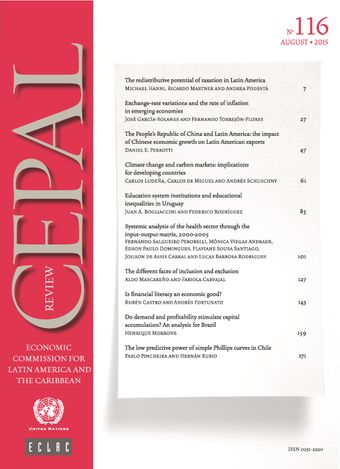-
Do demand and profitability stimulate capital accumulation? An analysis for Brazil
- Source: CEPAL Review, Volume 2015, Issue 116, 8月 2015, p. 159 - 170
- スペイン語
-
- 28 3月 2016
Abstract
This article tests whether the profit share of GDP and capacity utilization affect capital accumulation in Brazil in the period 1950-2008 (in the sense of Granger causality). The methodology developed by Toda and Yamamoto (1995) is used to verify the Granger non-causality hypothesis. The results show that capacity utilization Granger-causes capital accumulation in the Brazilian economy and, also that the profit share of GDP does not Granger-cause the national investment-capital ratio. This corroborates the Kaleckian proposal based on the fundamental role of the accelerator, and suggests that the Brazilian economy can grow with either a concentration or a de-concentration of income, provided a suitable institutional arrangement is in place.
© United Nations





